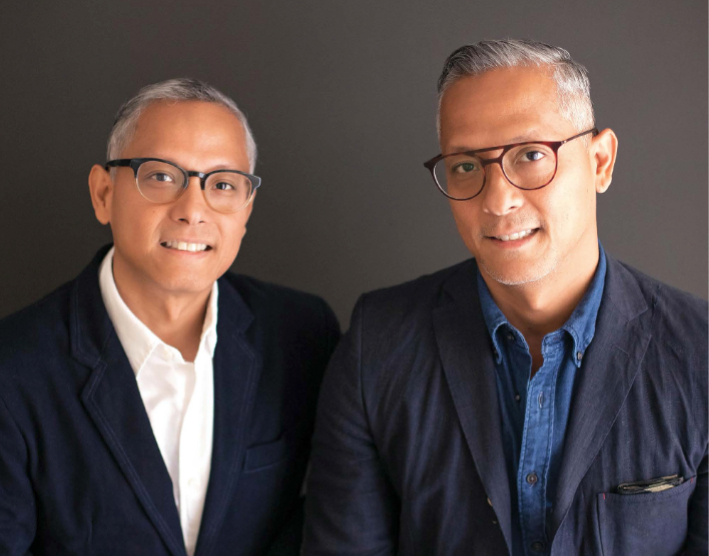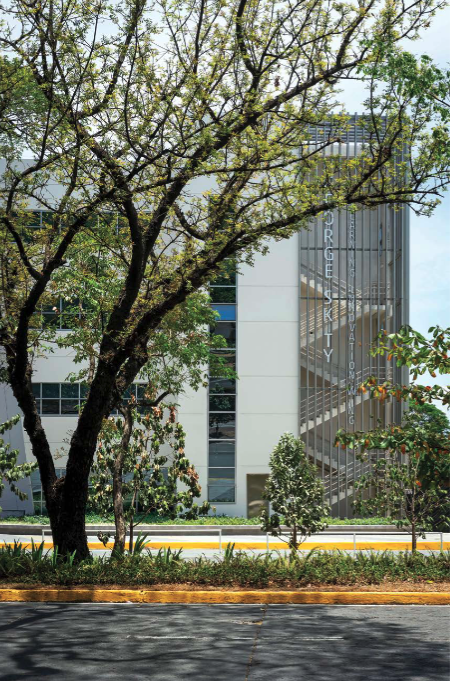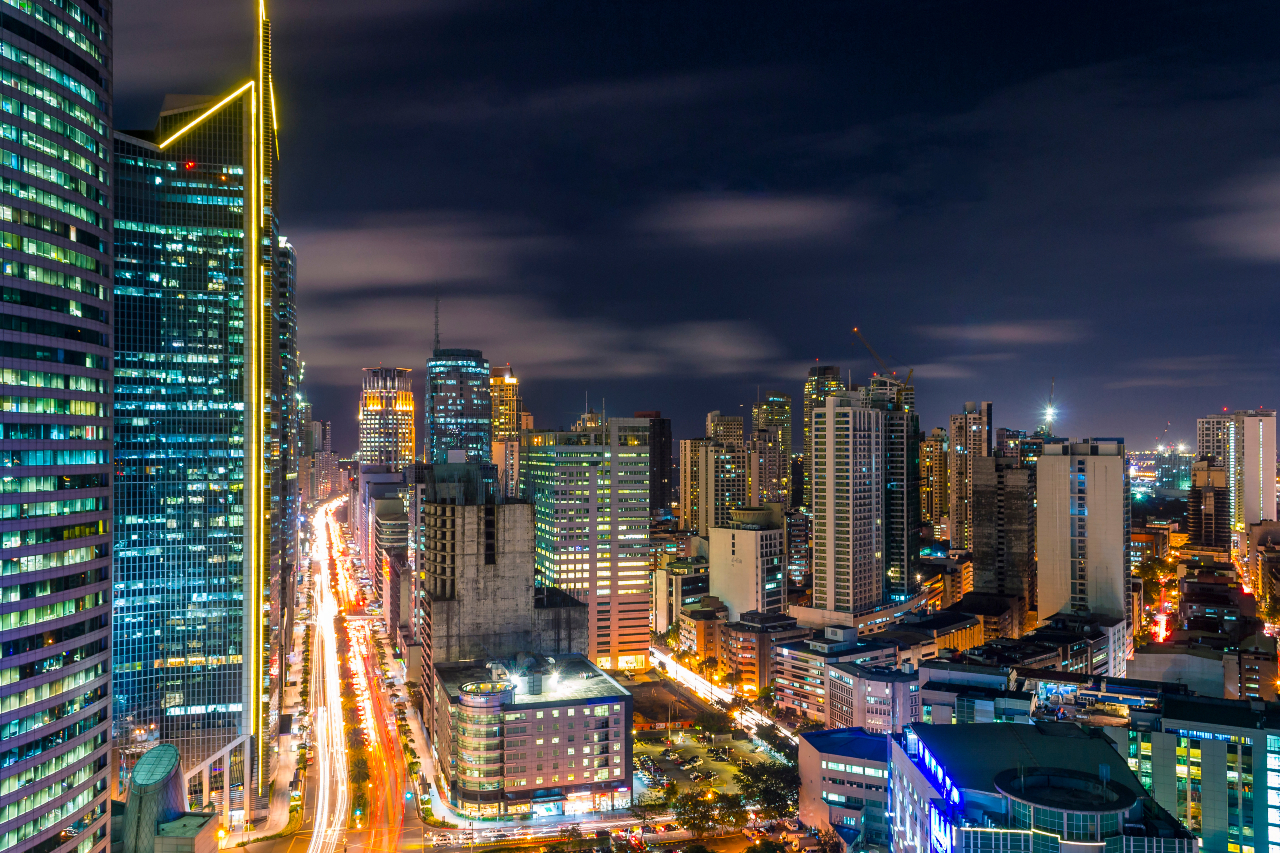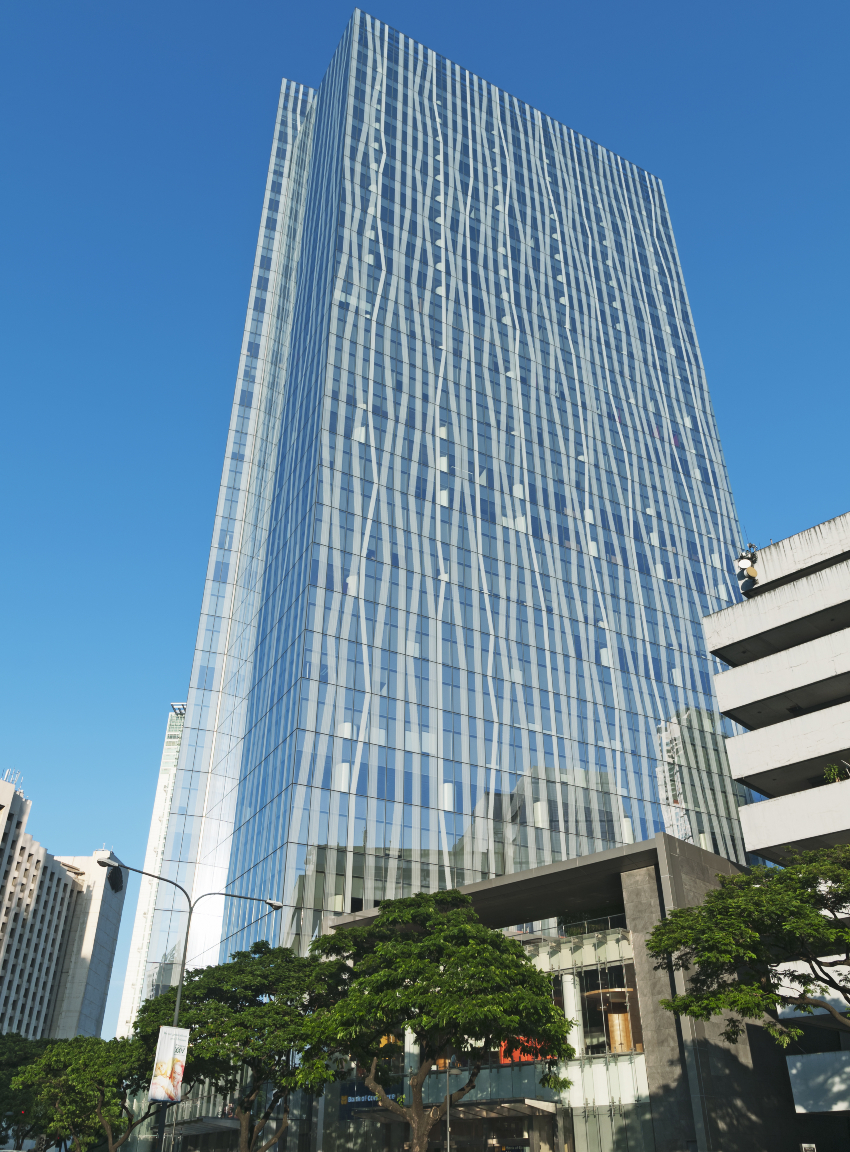Chips off the old block: Meet Manila’s brothers in architecture
Armed with progressive design principles and a ferocious work ethic, twins Gil and Gary Coscolluela are proving worthy successors to their trailblazing father

To drive around Metro Manila’s central business district of Makati is to bear witness, in large part, to the architectural legacy of the Coscolluela family, which has been leaving its imprint on the city’s skyline for more than six decades.
The family patriarch, Willy, founded W.V. Coscolluela & Associates in 1957, and the firm’s hundreds of projects over the years have included landmark office, residential and commercial buildings, along with museums, country clubs, resorts, and more, both in the Philippine capital and beyond.
Among the firm’s many recognisable and enduring creations are RCBC Plaza, the Ayala Twin Towers, and SM City North Edsa—the country’s largest shopping mall when it opened in 1985.
In recent years, the firm has helped usher in the green architecture movement in the Philippines through its work on the LEED-certified, 33-storey Zuellig Building in Makati, commissioned by the Swiss pharmaceutical company with deep manufacturing roots in the country.
In university a lot of our mentors knew the family name. It was a double-edged sword: it did well for us in a lot of ways, but there were high expectations being the sons of a prominent architect
Today, Gil and Gary Coscolluela—Willy’s twin sons—stand at the helm of the business alongside their father, who, in his mid-80s, remains actively involved. Gil and Gary were made senior architects in 2013 and have since furthered Willy’s vision through their involvement in some of its most important new projects.
Being the scions of an industry leader has always meant a high bar, the brothers say.
“In university a lot of our mentors knew the family name or they knew our father. Some teachers were classmates with him. It was a double-edged sword: it did well for us in a lot of ways, but there were high expectations being the sons of a prominent architect,” Gil says.
Like business leaders everywhere in the age of the coronavirus pandemic, Gil and Gary are being forced to confront new challenges. Covid-19 cases in the Philippines have been steadily rising since July, but the firm continues to move forward, laying the groundwork for new projects in 2021.
“Things have slowed in the construction side of the business. We’ve had some projects put on hold, or deferred, to the first quarter of next year. But luckily for us we’re still ongoing with planning for other projects, which is good. We have a lot of time for planning until the end of the year,” Gil says.

Did you always know you were going to follow in your father’s footsteps and become architects?
Gil: When I was younger, I thought I might go into business because I saw how complicated architecture could be—and business seemed like the fastest way to make money. But then I started spending time in the office in the summers, and I really grew to appreciate the design and development aspects of architecture.
Gary: The same goes for me. Somehow in the beginning architecture wasn’t on my mind. But our exposure to the field led us both this way. Also, having seen our dad work so hard—I knew he needed help. He wanted one of his family members to take up that mantle.
What’s the greatest lesson you’ve learned from your father?
Gil: For me, it’s him saying, “Never compromise your principles. If you believe in something and stand for something, then stick to it.” And he always says: “Time is gold. Don’t waste your time.”
Gary: Patience is another thing he’s especially good at. When you work with clients, you need to understand their needs and wants, and how you can marry your ideas with theirs. It can take a lot of patience, especially when you’re young and have ideas you want to push.
How would you characterise your design aesthetic?
Gil: Our dad is not an aesthetic designer, and that’s trickled down to us in the sense that we like to plan things from the inside out. We adhere to the idea that form follows function. Maybe that’s old-fashioned, but it works; it’s efficient and it gets the job done. What’s reflected inside is reflected outside.
Are there types of projects you prefer from a creative standpoint?
Gil: Personally, I don’t have a preference. I’ve been involved in office buildings, shopping malls, museums, and houses, and each has its own requirements in terms of how to go about it. The bigger key for me is finding the right client, one who understands your ideas and with whom you can communicate effectively and produce what needs to be produced.
Gary: From a construction standpoint, it’s easier to build office spaces. In residential, there are many areas to consider, whereas an office is mainly just an open space. You put the proper provisions and the tenant can do what they need with the space. It’s easier in terms of construction. But design-wise, we do office and residential, and it’s all very educational.

What recent project stands out as a particularly notable achievement?
Gil: One that really stands out is the Zuellig Building in Makati, because it’s the first platinum-level LEED-accredited building in the Philippines—not just the exterior, core, and shell, but the interiors as well. It has become the benchmark for a lot of office buildings coming up in the CBD area. For that project, the client was adamant they wanted an iconic building, an efficient one, and one that would go up to LEED Platinum.
What are the challenges of getting underway on a project like that?
Gary: The design brief at the beginning is always important. Having an open dialogue and a clear brief helps spell out the project’s intentions and goals. From there it just develops. A lot of people have different ideas, and that can be another challenge so it’s helpful to have a committee consolidate those ideas.
Gil: The interaction between the designers and architects is key so that a more refined brief can be produced. That helps everyone know if something can be executed properly.

What changes are you seeing in clients’ demands for so-called green architecture?
Gil: A lot of projects coming up want to be similar to the Zuellig Building. With a proper team and proper client, it can be achieved. Green architecture includes considerations like wellbeing, community impact, energy and carbon reduction, mobility, connectivity, and water usage. All of these amount to costs at the same time. When reality sets in, there will usually be some compromises. It really depends on the client and what their wants, needs, and directions are.
What does “going green” do to a project’s costs?
Gil: What seems to be hard for some clients to accept are the initial costs that come with it. That’s why we need to prove that in the long run, it’s beneficial to them to get into sustainable design as there are long-term cost savings.
Gary: This is especially relevant today [with the coronavirus pandemic]—the environment is very important to people, whether it’s residential or office spaces. Over the years, costs in sustainable technology have come down a bit and should come down even more as we move forward. For any development, we always put these on the table for clients.
What’s happening in the sphere of urban development in the Philippines?
Gary: The government has implemented guidelines for sustainable technologies, and there are new incentives to adopt these guidelines. Before there were no incentives and nothing much was being implemented—it was all on the developers’ shoulders. Makati is a dense, heavily populated area that needs more open spaces, so there are new incentives to achieve that. Things like pedestrian spaces are increasingly important.
What’s on the horizon for your firm?
Gil: There are many big, exciting projects. We are working a lot with Foster + Partners. My brother is involved in a big project with them for the most expensive and tallest residential project in the CBD. At the same time, we’re working with them on another very big office building in the CBD. We feel lucky to be busy at this point.
This article originally appeared in Issue No. 162 of PropertyGuru Property Report Magazine
Recommended
Why everyone is moving to Selangor and Johor: Malaysia’s real estate comeback
Malaysia’s upturn in fortunes is especially prevalent in secondary destinations such as Selangor and Johor
Penang’s silicon boom: How the US-China tech war is supercharging local real estate
Penang’s booming semiconductor industry has created ripples within the local real estate sector
New leader, new opportunities: How Hun Manet is shaking up Cambodia’s real estate game
Hun Manet is overseeing decent economic growth and widening access to the country’s real estate market for foreigners
Singapore embraces inclusive housing reforms amid resilient demand
The Lion City’s regulatory strength continues to exert appeal for international investors








